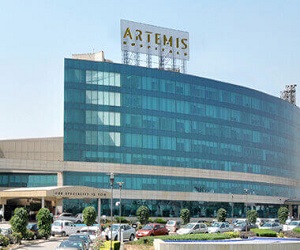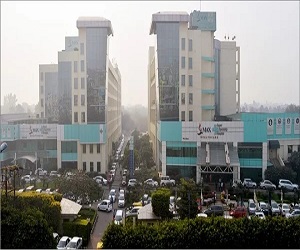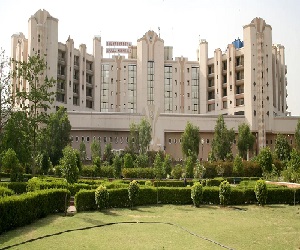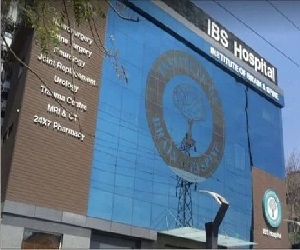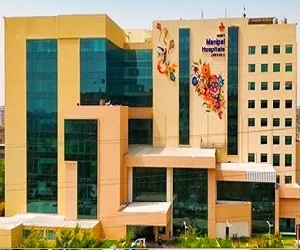“Spondylolisthesis” is derived from Greek words, indicating a spinal condition where the lower vertebrae slip forward onto the bone directly. This displacement primarily affects the lower vertebrae, resulting in dysfunction and pain due to increased pressure on the associated nerve roots.
There are mainly three types of Spondylolisthesis, which are:
Congenital Spondylolisthesis:Congenital Spondylolisthesis is a spinal condition characterized by an abnormality in the posterior bony arch, present since birth. This anomaly contributes to slippage, typically occurring at the L5-S1 level and associated with facet joint abnormalities. Common symptoms include back pain, particularly during adolescent growth spurts.
Isthmic Spondylolisthesis:Isthmic Spondylolisthesis is a spinal condition characterized by injury to the pars interarticularis, the portion of bone connecting the upper and lower joints of the vertebrae. It is typically caused by a stress fracture, often with a hereditary predisposition.
Degenerative Spondylolisthesis:Degenerative Spondylolisthesis is a spinal condition where slippage occurs as a secondary effect of spinal arthritis, often associated with spinal stenosis.
Degenerative Spondylolisthesis arises from long-standing degenerative disc disease, weakening the facet joints of the spine. This condition commonly occurs at the L4-L5 level.
What are the benefits of Spondylolisthesis Spine Treatment?
Who needs Spondylolisthesis Spine Treatment?
Spondylolisthesis, a type of spine injury, happens for different reasons depending on how old you are and what’s going on in your body. It can also be made worse if you already have other problems that aren’t being treated. If you’re feeling muscle spasms in your leg, stiffness in your back, finding it hard to walk or stand for a long time, or feeling pain when you bend over, it’s important to see a doctor. They might suggest surgery to help.
How is Spondylolisthesis Spine Treatment done?
Doctors treat Spondylolisthesis spine injuries with a surgery called spinal fusion. This surgery is known to work well. During the surgery, the doctors join two vertebrae together permanently to stop them from moving. They do this by placing bone grafts between the vertebrae, which helps them fuse together.
And with recovery and time, the new bone grows over the graft.
What are the recovery and post-op care after Spondylolisthesis Spine Treatment?
Recovery from Spondylolisthesis spine surgery typically takes 8 to 10 weeks. During this time, it’s important to limit physical activities and focus on low-impact movements to allow the spine to heal and fuse properly.
Early ambulation, or getting up and moving around soon after surgery, is encouraged because it helps reduce the risk of postoperative complications such as pneumonia and venous thrombosis. Walking exercises are particularly helpful in preventing these issues.
What are the risks and complications of Spondylolisthesis Spine Treatment?
Following Spondylolisthesis spine surgery, there are several risks and potential complications to be aware of. These include hardware failure, non-union (where the fused bones don’t properly heal together), adjacent segment degeneration, bleeding, infection, nerve root damage, dural leak (where spinal fluid leaks), and general anesthetic risks such as heart attack and blood clot formation. It’s important for patients to be informed about these possibilities and discuss any concerns with their healthcare team.
Spondylolisthesis Treatment in India
As one of the finest healthcare providers globally, India treats medical conditions like spondylolisthesis using advanced science and state-of-the-art facilities.
Spondylolisthesis spine treatment in India is divided into two categories: non-operative management and operative management. Non-operative management involves treating the condition without surgical procedures, focusing on methods like physical therapy and medication. Operative management, on the other hand, involves surgical intervention to stabilize and correct the spine.
The two categories of Spondylolisthesis Spine treatment in India involves:
Non-Operative Treatment of Spondylolisthesis
This non-surgical treatment method is used for patients exhibiting mild symptoms of spondylolisthesis, with no indications of severe complications. The approach includes the use of analgesics and anti-inflammatory drugs, lifestyle modifications such as weight loss and healthy eating, and physiotherapy.
Operative Treatment of Spondylolisthesis
This treatment method involves surgical intervention, with fusion surgery and TLIF surgery being quite common. These surgeries can be performed using different methods, including Open TLIF (the traditional approach), MIS Minimally Invasive TLIF (using minimal invasive techniques), and Endoscope Assisted TLIF (the latest fusion surgical method).
Spondylolisthesis Spine Treatment cost in India are as follow
| Treatment | Cost in USD | Stay in Hospital |
| Spondylolisthesis Spine Treatment | 4500-5500 | 1-2 Days |
| Osteoarthritis Spine Treatment | 3500-4000 | 2-4 Days |
| Degenerative Disk Spine | 10500-11500 | 2-3 Days |
| Meningiomas Treatment | 4000-4500 | 8-10 Days |
| Scoliosis Surgery | 9000-9500 | 5-7 Days |

